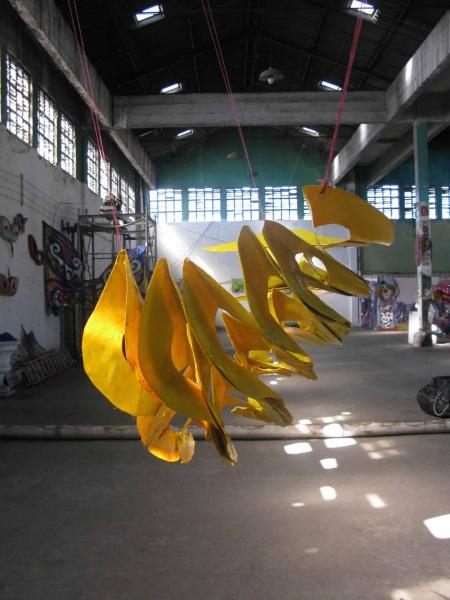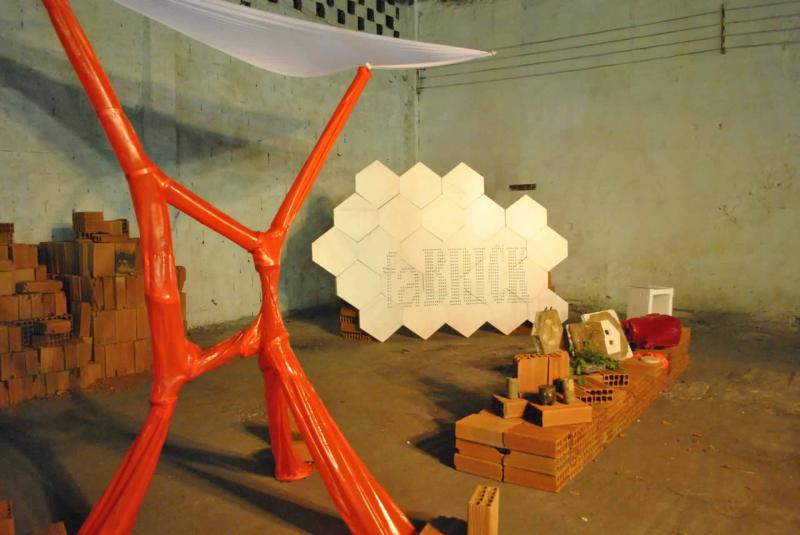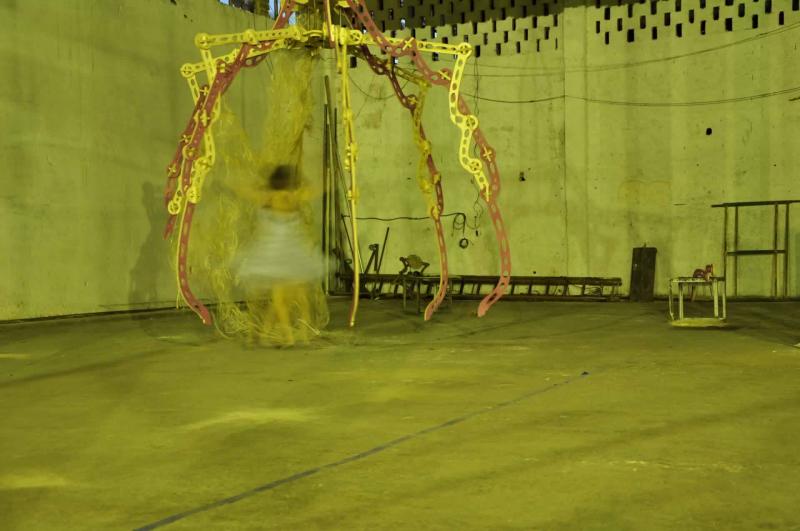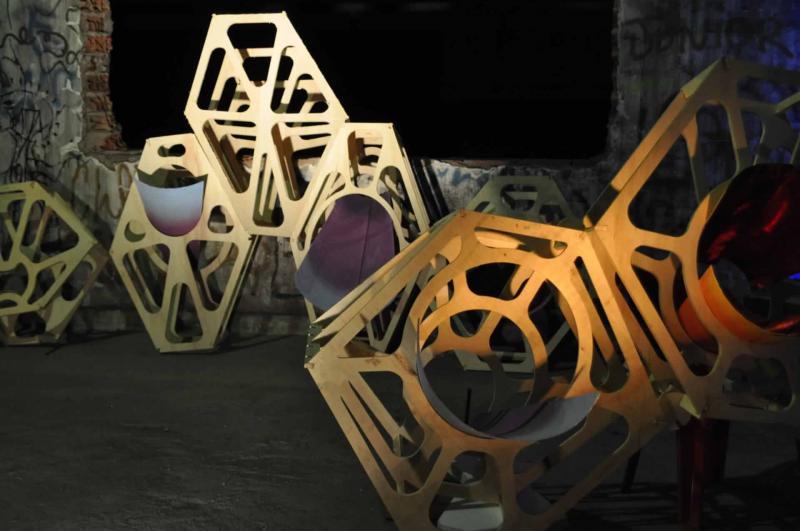



Matéria Prima
Barracões do Samba, Porto do Rio
5–14 April 2011
Complementing the venues associated with Rio de Janeiro’s annual Carnival, 2014 World Cup and 2016 Olympic Games, this workshop explored alternative, informal and grass-roots sports and cultural programmes as a way of transforming precarious urban environments and communities and helped guarantee a community legacy for these global events. The ten-day workshop promoted a design philosophy that mediated between global and local sensibilities, between formal and informal economies, and between high-tech and low-tech fabrication processes. In contrast to imported and pre-fabricated end-products, it employed a hybrid methodology, using raw goods (matéria prima) and other found-objects (inspired by the work of artist Ernesto Neto and the Campana Brothers), yet evolving these projects with novel computational-design and fabrication techniques that emphasise the introduction of component-based logics.
The workshop itself took place almost 40 days after the Carnival, and explored the re-use of the actual Carnival floats, costumes and other related paraphernalia, and collaborated with several Escolas de Samba located in the post-industrial empty warehouses of the Porto area, the birthplace of the Carnival and Samba. The recyled Carnival material was transformed using digital fabrication processes and new digitally fabricated joint components, and reated interventions for micro-venues and urban furniture in the Porto region, to support open cultural and sports events that engaged the local populations and both countered and complemented the large-scale constructions of Olympic sports venues.
Open to designers from all over the world, the studio-based workshop included extensive parametric modelling, instruction in Rhino Grasshopper and digital fabrication processes using laser cutter, CNC-milling and rapid-prototyping machines, sponsored by DS4 and SEACAM, all of which were used to produce design proposals and physical models. The workshop
also featured seminars and lectures by both Brazilian and international architects, artists, urban planners and other specialists (working directly with the Carnival float artisans in their workshops and collaborating with the FABberz’ DIA Workshops), and culminated with the fabrication of one-to-one scale prototypes and a final review within the port and city-centre sites.
Directors
Anne Save de Beaurecueil and Franklin Lee use computation to generate environmentally responsive geometries for architecture and urban design projects in Brazil. They previously taught at the Pratt Institute in New York, hold master’s degrees from Columbia University and have published, exhibited and lectured on their work worldwide.